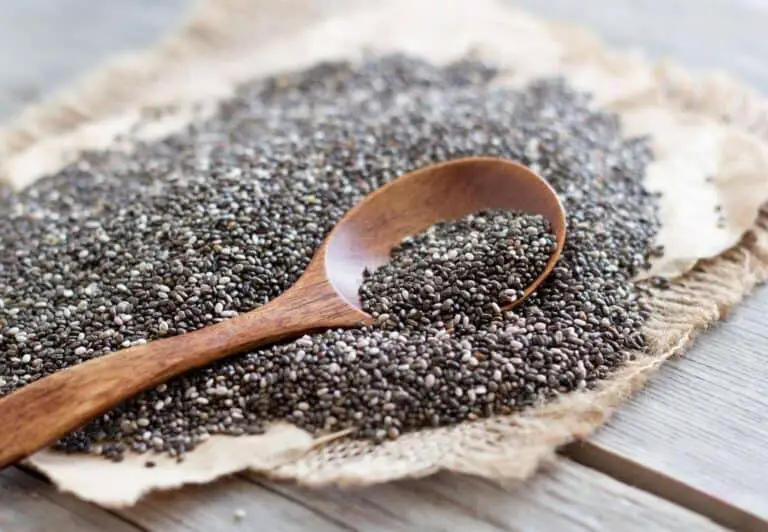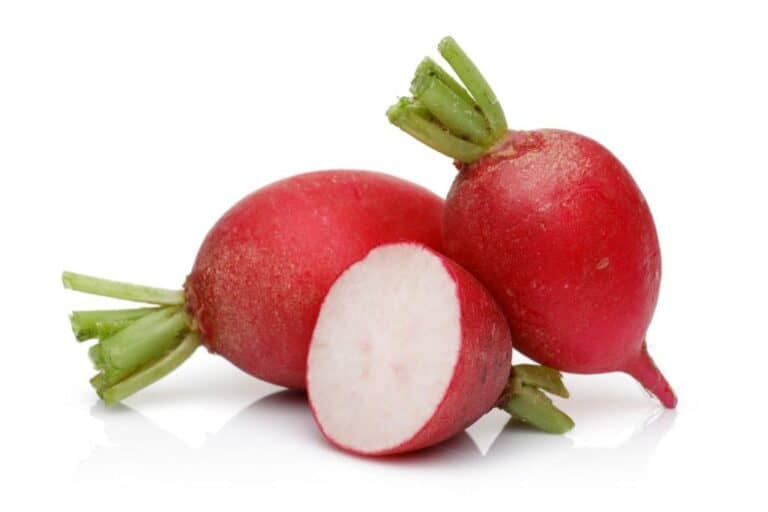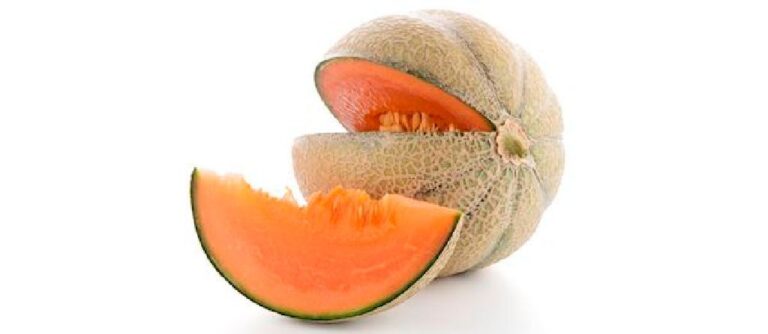Can You Eat Lupini Bean Skin? Is Lupini Peel Edible and Safe to Eat?
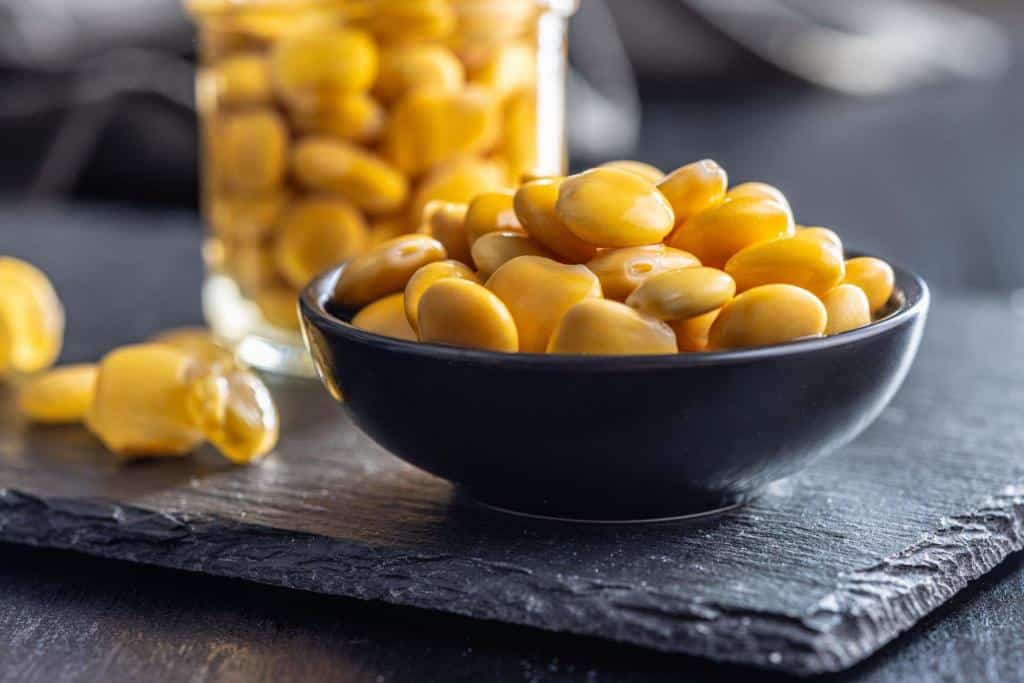
Lupini beans, with their enticing nutty flavor and impressive nutritional profile, have gained a foothold in the world of health-conscious eaters. As culinary enthusiasts continue to explore the delectable possibilities of these legumes, an intriguing question surfaces: can you eat lupini bean skin?
Yes, the skin of lupini beans is edible. Some people just pop the whole bean into their mouths, while others prefer to remove the skin by rubbing the bean between their forefinger and thumb.
In this article, we embark on a journey to unveil the edible and safe nature of lupini peel. Join us on a flavorful journey as we embark on a quest to unravel the truth behind lupini bean skin. Let’s decipher its edibility and the safety it offers, all while delving into the scrumptious universe these legumes inhabit. Grab your culinary curiosity, for we’re about to peel back the layers of lupini wisdom!
A Brief Introduction to Lupini Beans
Before we dive into the intricacies of lupini bean skin, let’s first understand the nutritional treasure these beans hold. Lupini beans, also known as lupin beans, are a type of legume that is traditionally eaten as a pickled snack food in the Mediterranean basin, Latin America, and North Africa.
They are round, mustard-colored beans that are full of fiber, contain all nine amino acids, and are packed with vitamins and minerals like magnesium. Lupini beans are a nutritional powerhouse and are exceptionally high in plant-based protein, making them an excellent source of protein for vegans and vegetarians.
They are also a great source of fiber and antioxidants. Lupini beans can be eaten by making a small tear in the skin with one’s teeth and “popping” the seed directly into one’s mouth, but they can also be eaten with the skin on.
The skin can also be removed by rubbing the bean between the forefinger and thumb. Lupin beans can be ground into flour, which is widely used in parts of Europe and in Australia as an additive to wheat flour, enhancing the flavor and lending a rich, creamy color to the resulting foods.
Nutritional Profile of Lupini Bean Skin
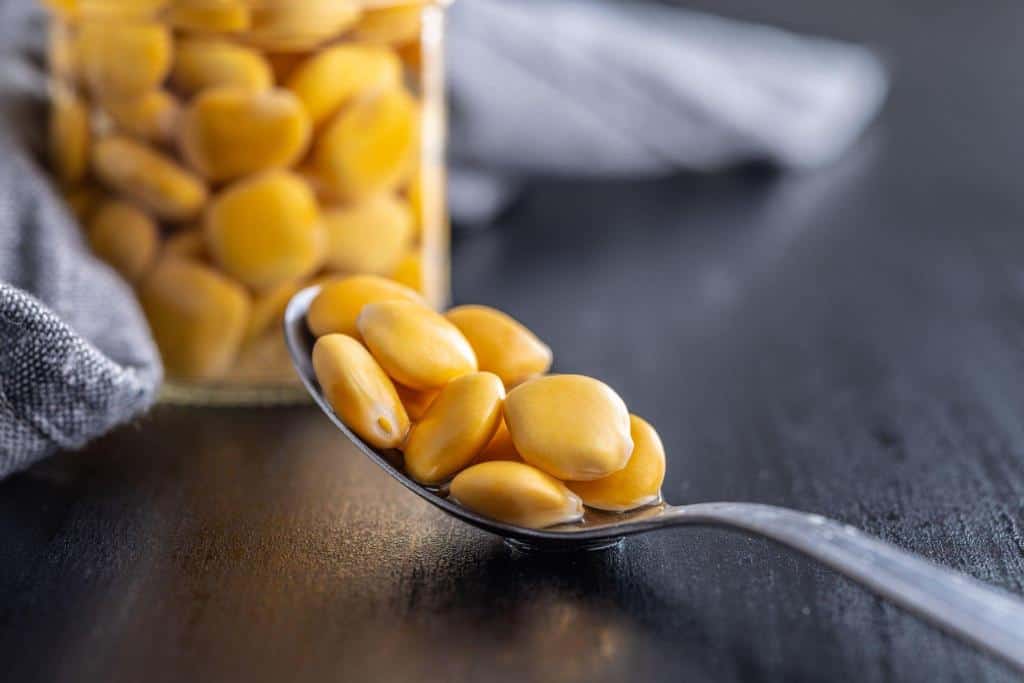
Lupini bean skin is a remarkable component that’s often discarded without a second thought. However, it holds a wealth of nutritional goodness that might surprise you. This thin layer is rich in protein, dietary fiber, and essential nutrients. While the inner flesh of the lupini bean is well-known for its protein content, the skin also contributes to the overall protein intake when consumed.
These beans offer a lot of nutrients. A mere one-ounce serving provides around 6 grams of protein, making them an excellent option for vegetarians and vegans seeking protein alternatives. Moreover, lupini beans are a great source of dietary fiber, promoting digestive health and providing a sense of satiety. Their mineral content is impressive, featuring potassium, magnesium, and calcium, which play pivotal roles in maintaining bodily functions.
Additionally, lupini bean skin offers a significant dose of dietary fiber, promoting healthy digestion and helping you feel fuller for longer periods. This makes it an interesting addition to various dishes, contributing not only texture but also a nutritional boost.
To Peel or Not to Peel: Can You Eat Lupini Bean Skin?
Now, let’s address the pressing question: is lupini bean skin edible? The answer is yes, it is indeed edible. The skin of lupini beans is not toxic or harmful to consume. In fact, in many cultures, lupini beans are traditionally enjoyed with their skins intact. The skin adds a slight chewiness to the beans, enhancing the overall texture of dishes.
However, some individuals might find the skin slightly bitter or tough, which prompts them to peel the beans before consumption. Peeling lupini beans can be a meticulous process, but it can be well worth the effort for those who prefer a smoother texture and a milder taste.
Peeling can be facilitated by gently squeezing the bean between your thumb and forefinger, allowing the skin to slip off. Alternatively, you can blanch the beans in boiling water for a few minutes to loosen the skin, making peeling easier.
Safety Considerations for Eating Lupini Bean Skin
While lupini bean skin is indeed edible, there’s an important aspect to consider: alkaloids. Lupini beans contain naturally occurring alkaloids, which are compounds that can have a bitter taste and, in larger quantities, might cause digestive discomfort.
However, proper preparation methods can significantly reduce the alkaloid content, rendering the beans safe for consumption. Thoroughly soaking and boiling the lupini beans with the skin can help reduce the bitter taste and remove any potential toxins.
To ensure safety, it’s crucial to follow proper preparation methods. By taking these steps, you can enjoy lupini bean skin without compromising your health:
- Soaking: Start by soaking the beans in water for an extended period, typically around 5 to 7 days. This soaking process helps leach out the alkaloids, making the beans milder in taste.
- Boiling: After the soaking period, rinse the beans thoroughly and boil them in fresh water. Boil them for at least 15 to 20 minutes, or until they are soft and tender. Discard the water used for boiling, as it might contain some of the leached alkaloids.
- Rinsing: Rinse the beans again under cold water to remove any remaining bitter compounds.
Lupini Bean Allergies and Sensitivities
As with any food, it’s important to address potential allergens and sensitivities. While lupini beans are a fantastic source of nutrition for many, some individuals might experience adverse reactions to the skin. Allergies to lupini beans, although relatively uncommon, can manifest in various symptoms, including itching, swelling, and difficulty breathing.
WARNING
If you suspect an allergy or sensitivity to lupini bean skin, it’s wise to consult a medical professional. Taking precautions and reading food labels carefully can help avoid unpleasant reactions.
Culinary Uses of Lupini Beans into Your Diet
Now that you’re well-versed in the edibility and safety of lupini bean skin, let’s explore the culinary avenues these beans offer. Lupini beans can be enjoyed in various ways, each showcasing their unique flavor and texture profile. Here are a few delightful ideas to get you started:
1. Lupini Hummus:
Create a lupini twist on the classic hummus. Blend cooked lupini beans with tahini, olive oil, garlic, and lemon juice. The result? A creamy and protein-packed dip that’s perfect for snacking.
2. Lupini Salad:
Toss cooked and peeled lupini beans into your favorite salad for an extra dose of protein and fiber. Their slightly nutty flavor can add an interesting dimension to your greens.
3. Lupini Stir-Fry:
Incorporate lupini beans into your stir-fry for a protein boost. Their firm texture makes them a great addition to vegetable stir-fries.
4. Marinated Lupini Beans:
Create a marinade using olive oil, herbs, and spices, and let the cooked lupini beans soak up the flavors. Enjoy them as a flavorful and nutritious snack.
5. Lupini Pasta:
Experiment with lupini bean pasta, a gluten-free alternative that’s both nutritious and satisfying. Pair it with your favorite sauce for a wholesome meal.
Conclusion
From crunchy snacks to hearty stews, lupini bean skin can be a versatile ingredient in the kitchen. It can be pickled, roasted, or even fried to create unique textures and flavors. The world of lupini beans extends beyond their familiar flesh, inviting us to consider the potential of their skin. By embracing lupini bean skin, you open the door to a world of culinary creativity that goes beyond the bean’s familiar flesh.
Are you curious about lupini bean skin consumption and its benefits? By exploring its culinary uses, you can uncover the nutritional value it offers. Lupini skin, when properly prepared, can become a delightful addition to your dishes, offering a unique texture and flavor profile.
While lupini skin can be a versatile ingredient in the kitchen, it’s essential to consider its digestibility and any potential bitterness. With proper precautions and culinary techniques, you can minimize bitterness and enhance the overall dining experience. experience. Lupini bean skin has something to offer on a number of fronts, whether you’re interested in developing culinary trends or passionate about reducing food waste.
So, don’t hesitate to explore lupini skin cooking methods and preparation techniques. Remember, with a touch of culinary creativity, lupini bean skin can become a valuable addition to your plate, contributing to both taste and sustainability.
FAQs on Lupini Bean Skin Consumption
Can you eat lupini beans raw?
No, lupini beans are not typically eaten raw due to their bitter taste and alkaloid content. They require soaking and cooking to become palatable.
How do you prepare lupini beans for eating?
To prepare lupini beans, soak them in water for several days, changing the water daily. Then, boil them for about 15–20 minutes until tender. This process reduces bitterness and removes alkaloids.
Are lupini beans a good source of protein?
Yes, lupini beans are an excellent source of protein, providing around 6 grams per one-ounce serving. Due to their high protein content, they are popular among vegetarians and vegans.
What are the potential health benefits of lupini beans?
Lupini beans offer dietary fiber, essential minerals like potassium and magnesium, and potential cholesterol-lowering effects. Their protein and fiber content can aid in satiety and digestive health.
Are there any potential side effects to eating lupini beans?
Excessive consumption of lupini beans might lead to digestive discomfort due to their alkaloid content. Proper soaking and cooking mitigates this risk.
Is it safe to eat lupini bean skin?
Yes, lupini bean skin is safe to eat. It can be consumed, though some may find it slightly bitter or tough. Peeling or blanching can enhance the texture and taste.
Can lupini bean skin be consumed by individuals with nut allergies?
Lupini beans are legumes, not nuts. However, individuals with allergies should consult allergists before trying lupini beans due to possible cross-reactivity.
How should lupini bean skin be prepared to ensure safety?
Soak and boil lupini beans following proper procedures to reduce alkaloid content. Peeling or blanching the skin can enhance its edibility.

